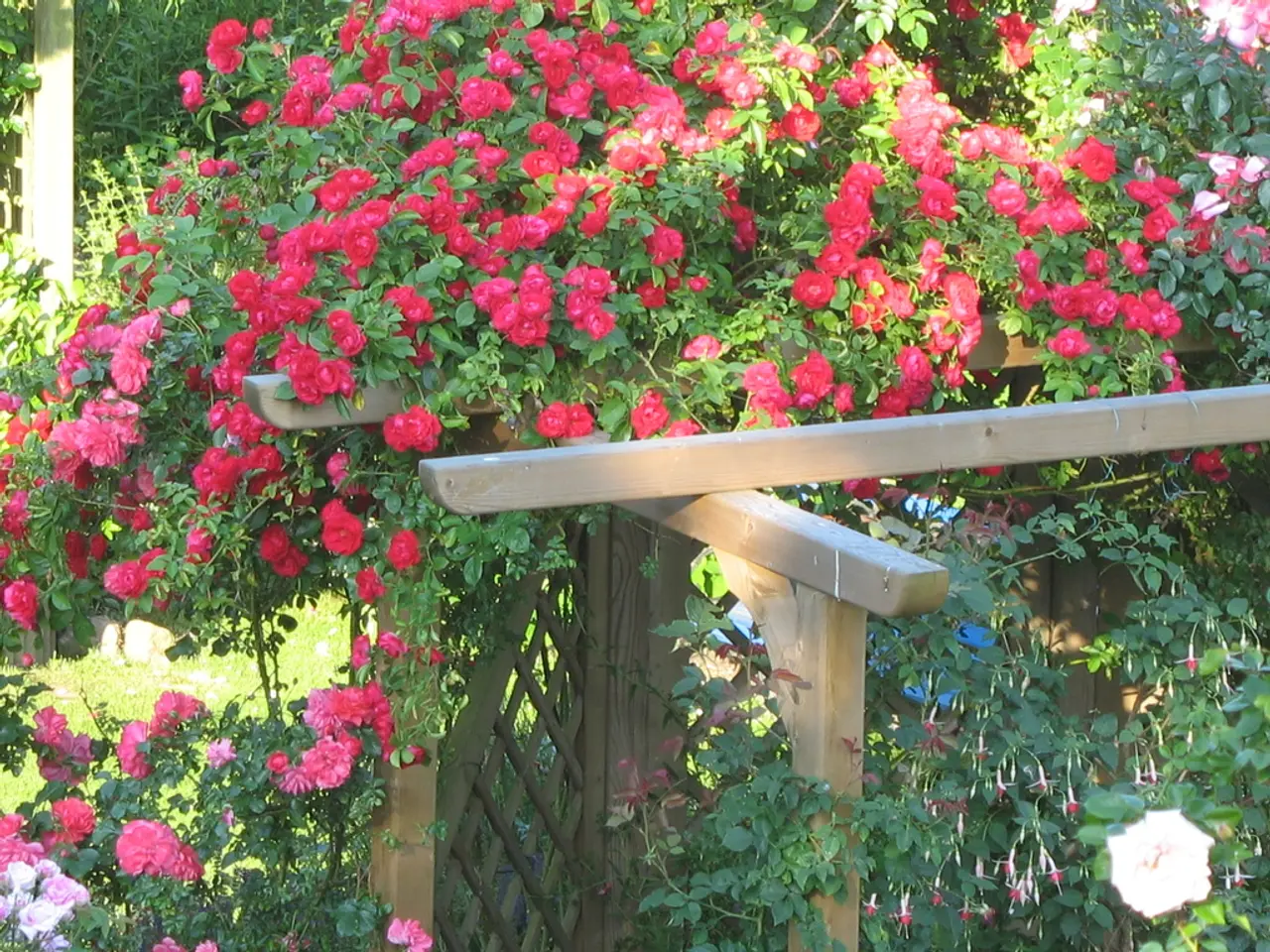Transform a sense of spaciousness in a small garden - learn how to design an attractive, compact garden layout
In the realm of garden design, small spaces can be transformed into expansive oases that provoke an emotional response and offer a sense of discovery. Here are some key principles to consider when designing a compact garden.
Firstly, avoid a single dominant axis in narrow or awkwardly shaped gardens. Introducing diagonals can disrupt the corridor effect, making the space feel more open and inviting. This principle was developed by the Prussian garden architects Peter Joseph Lenné and Gustav Meyer around 1850, associated with the mixed style of the Lenné-Meyer school.
Careful selection of light-canopied, deciduous varieties is crucial to avoid blocking light or views. Trees offer structure, seasonal interest, and wildlife activity throughout the year, but they should not dominate the space.
Gardens must have boundaries, but blurring the edge or borrowing from the view between the garden and surrounding landscape can make it feel more spacious. Neighbors' trees can serve as borrowed green, visually extending your space and giving a sense of depth.
Restraint is important in a small, awkward space. Limit visual complexity by using no more than two or three hard materials, or by using the same material but in different formats.
In a garden that risks feeling long and narrow, careful design choreography prevents it from feeling like a corridor. Playing with levels can create a more dynamic layout, making a compact garden feel more expansive.
Small gardens demand clarity and decisiveness about priorities. Celebrate the side return in compact gardens, as it provides unique microclimates and opportunities for interesting plantings. Subtle shifts in level give spatial definition without losing space.
Every side of the house should have a relationship with the garden, allowing for a genuinely planting-led approach. A dining space close to the house can make functional and solar sense, but avoid visually echoing between interior and exterior tables.
In smaller gardens, 'cues to care' can help stop naturalistic planting from looking accidental or neglected. Mown strips of lawn, stepping stones through planting, topiary, or rhythmic, stylised log piles can act as visual punctuation and frame complexity in a way that feels deliberate and purposeful.
The joy of a compact garden is that it allows for intimate interaction with every detail. A gentle pruning of the lower branches of a multi-stemmed tree lets you underplant beautifully and allows sightlines through to the garden beyond.
Finally, designing a garden with light is especially important in a small space. East-facing spaces are suited for mornings, west light is perfect for suppers and firepits, south-facing spots get the most sun, and north-facing gardens can work beautifully once light conditions are understood.
These principles, when applied thoughtfully, can turn a compact garden into a spacious oasis that offers a delightful escape from the everyday.




